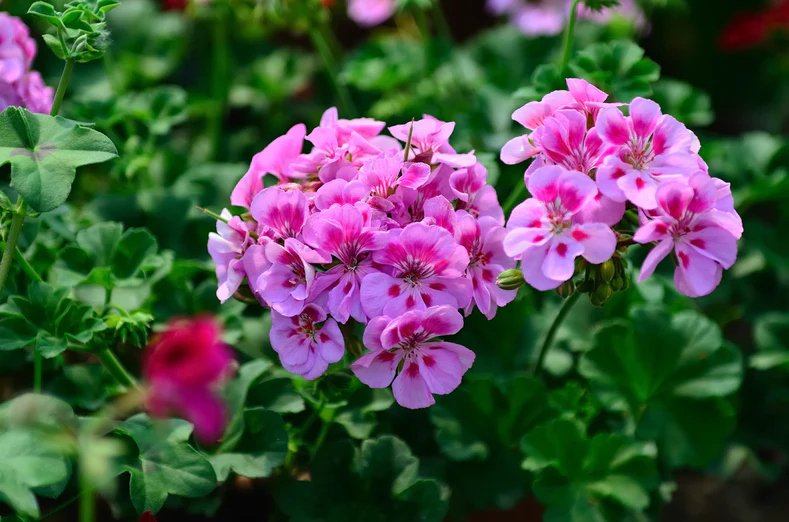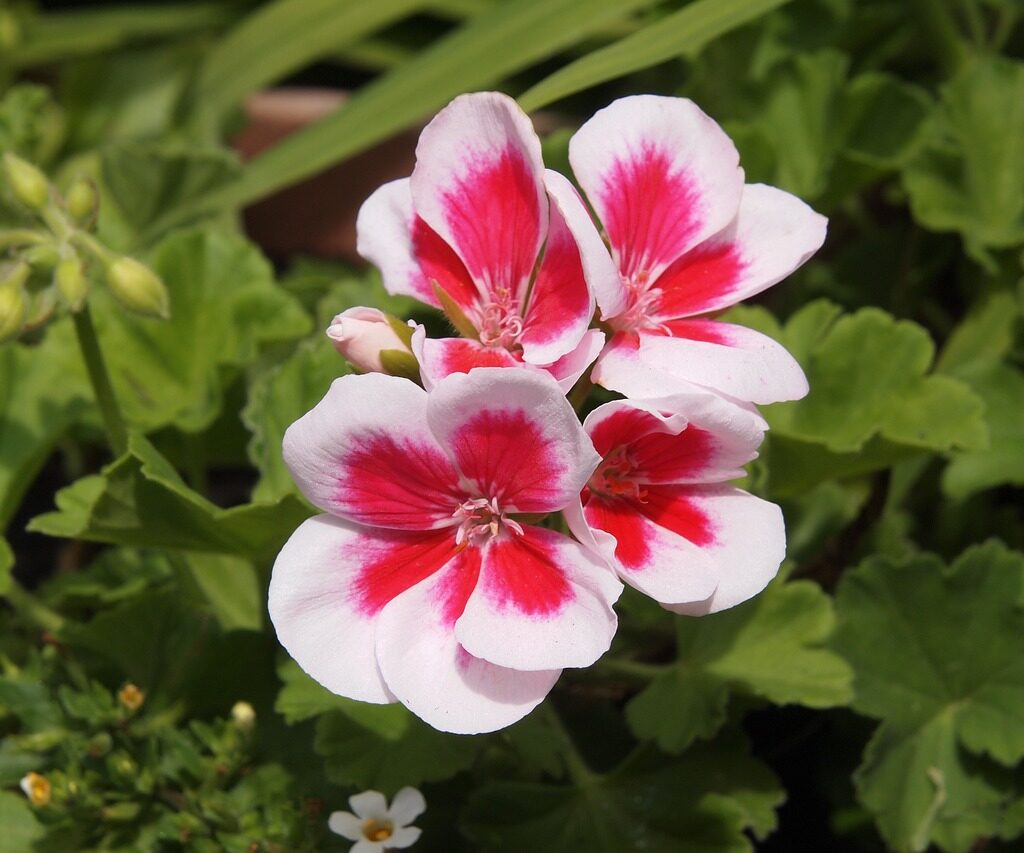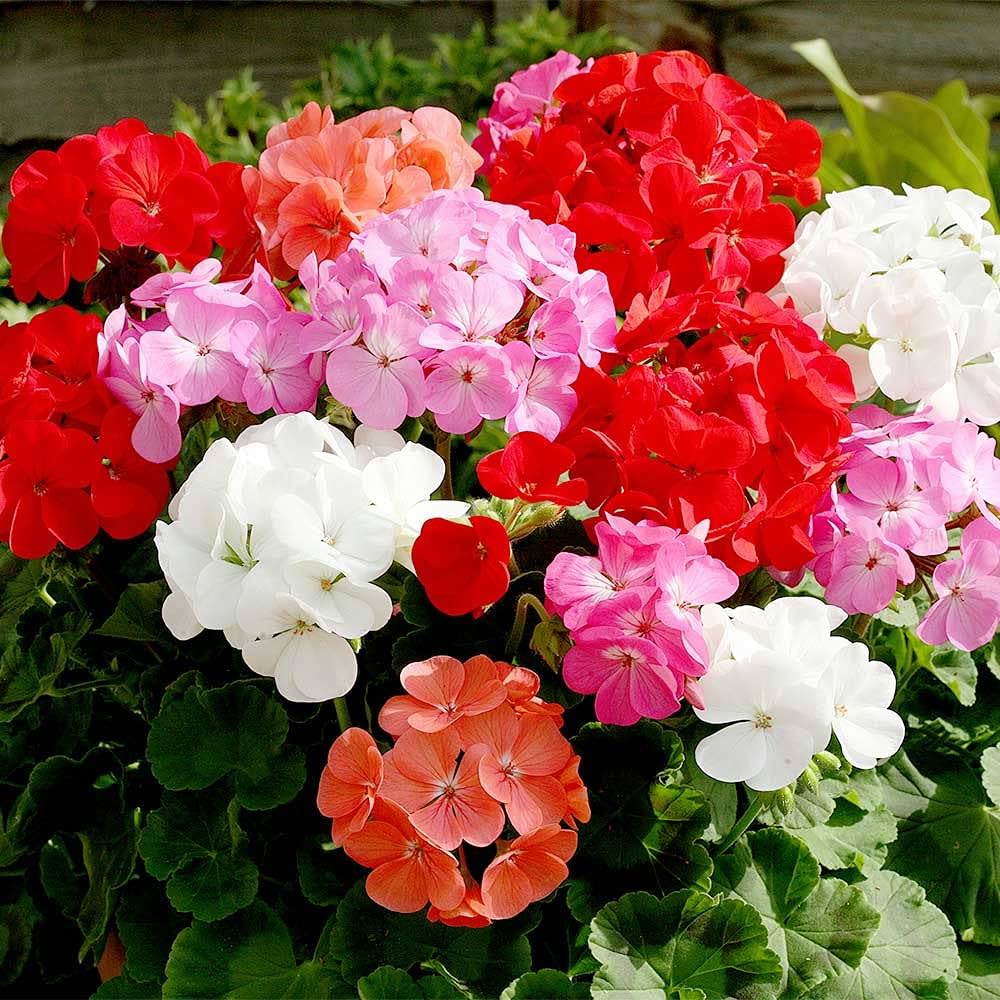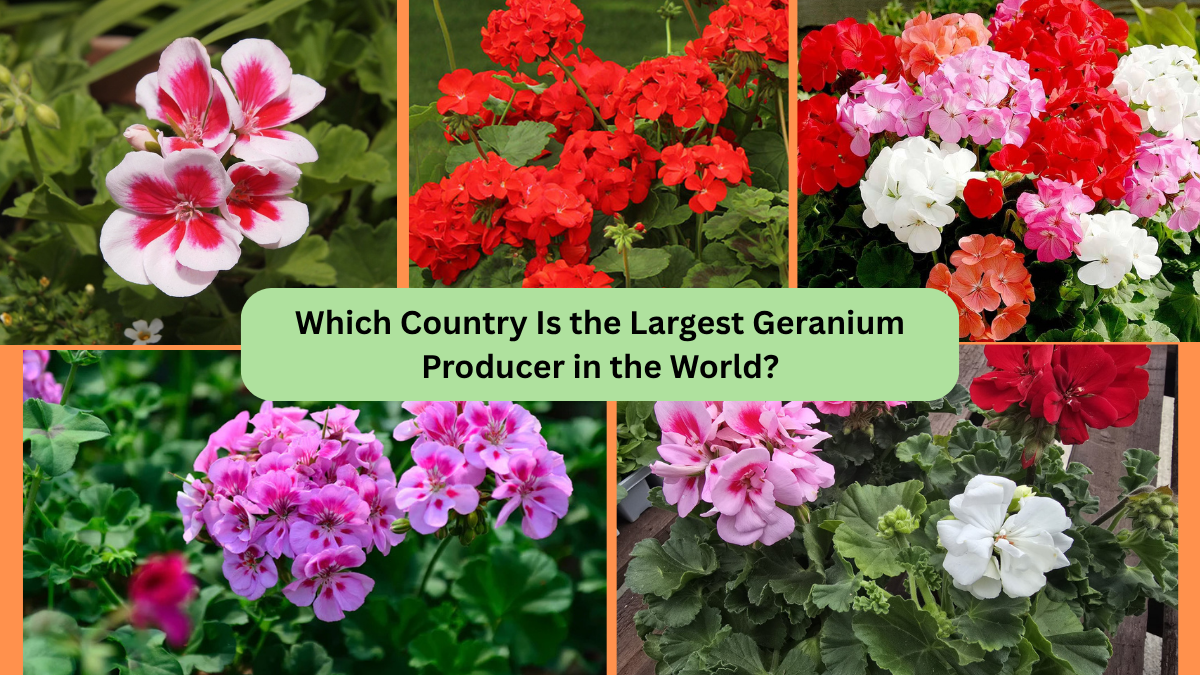When it comes to vibrant blooms that brighten up gardens, patios, and balconies, geraniums are among the most cherished flowering plants worldwide. Known for their rich colors, pleasant fragrances, and low-maintenance care, geraniums have captivated gardeners for centuries. Beyond their beauty, some geranium varieties also serve a valuable purpose in the essential oils industry.
But have you ever wondered — which country is the largest producer of geraniums in the world?
The answer is clear: Egypt holds the title for the world’s largest producer of geraniums, especially for essential oil extraction. In the realm of ornamental potted and garden geraniums, The Netherlands and India also play significant roles. Let’s explore the fascinating world of geranium production, from its history to modern cultivation, key producing countries, and global market trends.
A Brief History of Geraniums

The term geranium commonly refers to species in both the Geranium and Pelargonium genera. Though often used interchangeably in gardening, true geraniums are hardy perennials, while most decorative varieties belong to the Pelargonium genus. Native to South Africa, these plants were introduced to Europe in the 17th century, quickly becoming popular in ornamental gardening due to their vivid flowers and delightful aromas.
Today, geraniums are cultivated globally for two main purposes:
- As ornamental plants in gardens, window boxes, and containers.
- For essential oil extraction, particularly from Pelargonium graveolens, commonly known as rose geranium.
Global Geranium Production Overview
Geraniums are cultivated on every continent except Antarctica, thriving in mild to warm climates. Their adaptability makes them a favorite in both commercial horticulture and essential oil industries.
When discussing geranium production, it’s essential to distinguish between:
- Ornamental geraniums grown for landscaping and home décor.
- Scented geraniums grown for the extraction of essential oil used in perfumes, cosmetics, and aromatherapy.
Egypt dominates the global market for rose geranium essential oil, while countries like The Netherlands, India, and China are major players in the ornamental plant trade.
Egypt: The World’s Leading Geranium Producer
When it comes to the cultivation of rose geranium (Pelargonium graveolens) for essential oil, no country surpasses Egypt. The nation has ideal conditions for growing this highly aromatic plant, with its arid climate, fertile soils, and generations of expertise in herbal and aromatic crops.
Key Facts About Egypt’s Geranium Production:
- Egypt cultivates over 3,500 hectares of rose geranium.
- The country produces approximately 200–230 metric tonnes of essential oil annually.
- Regions such as Fayoum, Beni Suef, and Minya are known for vast fields of geranium plants.
- Around 30,000 rural families are directly involved in geranium farming and distillation.
- Egyptian rose geranium oil is highly prized for its sweet, floral fragrance and is a vital export product for the perfume and skincare industries in Europe and the Middle East.
Egypt’s leadership in the geranium oil market began in the mid-20th century, surpassing older production centers such as Réunion Island. Today, Egypt supplies around 60-70% of the world’s rose geranium oil demand.
The Netherlands: Leader in Ornamental Geranium Production
While Egypt leads in essential oil production, The Netherlands plays a major role in the global trade of ornamental geraniums. As a nation renowned for its floriculture industry, the Netherlands is a top exporter of potted plants and cuttings. Dutch Geranium Industry Highlights:
- The Netherlands supplies a vast range of Pelargonium varieties, including zonal, ivy-leaved, and scented types.
- Dutch floriculture companies like Syngenta Flowers, Dümmen Orange, and Florensis export geranium cuttings and plants globally.
- The country benefits from advanced greenhouse technology, ideal growing conditions, and efficient international trade hubs like Royal FloraHolland in Aalsmeer, the world’s largest flower auction.
India: Rising Geranium Powerhouse

India is rapidly emerging as a significant player in both ornamental geranium and essential oil production markets.
India’s Role:
- In the southern states of Tamil Nadu, Karnataka, and Andhra Pradesh, geranium cultivation has expanded due to government support and growing demand for natural essential oils.
- India now produces around 25–35 metric tonnes of rose geranium oil annually.
- Additionally, India is one of the largest exporters of ornamental Pelargonium plants, supplying countries across the Middle East, Southeast Asia, and Europe.
The combination of suitable climatic conditions and increasing investment in horticulture is helping India strengthen its presence in the global geranium trade.
China: Major Contributor to Essential Oil Markets

China is also a major producer of rose geranium oil, particularly in Yunnan Province, where the cool, misty conditions are perfect for aromatic plants.
China’s Geranium Industry:
- China produces approximately 80–120 metric tonnes of geranium oil per year.
- The country’s investment in essential oil production facilities and improved agricultural practices has positioned it as a key supplier to global markets.
China’s geranium oil is widely used in aromatherapy, cosmetics, and traditional medicine.
Other Notable Geranium-Producing Countries
Several other nations contribute to the global geranium industry, albeit on a smaller scale:
- South Africa: The native home of Pelargonium species, known for high-quality oils and specialty varieties.
- Madagascar: Produces the famed Bourbon geranium oil, renowned for its rich, rosy aroma.
- Morocco, Algeria, and Russia: Small yet established producers of geranium oil for local and niche international markets.
Global Market Trends and Future Outlook

The global demand for geranium essential oil is growing, fueled by increasing interest in natural fragrances, organic skincare, and aromatherapy. The market is currently valued at over USD 1.3 billion, with projections indicating steady growth in the coming years.
Key trends include:
- Expansion of cultivation areas in India and China.
- Rising interest in organic and eco-certified geranium oils.
- Growth in ornamental geranium markets, especially in urban landscaping and balcony gardening.
With its established infrastructure and ideal growing conditions, Egypt is expected to retain its leadership position in essential oil production, while India and the Netherlands will continue expanding their influence in both the essential oil and ornamental plant sectors.
Summary: Top Geranium-Producing Countries
| Country | Primary Role | Production Highlights |
|---|---|---|
| Egypt | Largest essential oil producer | 200–230 tonnes annually, 3,500+ hectares cultivated |
| Netherlands | Leading ornamental plant exporter | Major supplier of cuttings and potted geraniums |
| India | Rising essential oil and ornamental exporter | 25–35 tonnes oil, 10,000+ ornamental export consignments |
| China | Major essential oil producer | 80–120 tonnes annually in Yunnan Province |
| South Africa, Madagascar, Morocco | Niche producers | Specialty oils and ornamental varieties |
Conclusion

So, which country is the largest geranium producer in the world?
Egypt holds the global crown when it comes to essential oil production, with vast fields of rose geranium cultivated specifically for distillation. Meanwhile, The Netherlands and India are pivotal in the trade of ornamental geranium plants.
Whether it’s the fragrant oils in luxury perfumes or the colorful blooms adorning city parks and window boxes, the global geranium industry is thriving — and Egypt’s sun-drenched fields remain at the heart of this beautiful business.



